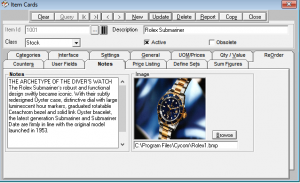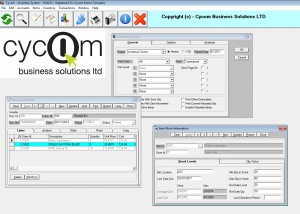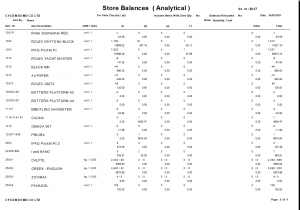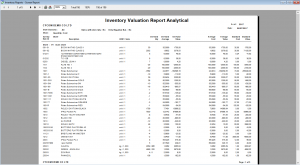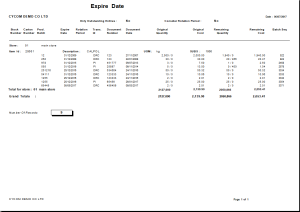
The System covers and supports organizational warehouse needs throughout the entire warehouse management cycle. It provides all the functionality needed to comprehensively control items in the warehouses. This includes planning and costing information, inventory valuation and stock status information.
Download Brochure
Flexible – The Inventory Management System offers unrestricted flexibility by allowing you to customize the system according your warehouse Business Processes. You may define multiple transaction definitions that govern how the different warehouse documents will behave depending on your organizational needs.
Simple to Use – The System incorporates internationally accepted graphical elements, according to the Microsoft Windows standard, delivering a familiar “look and feel”. This minimizes training time and allows users familiar with the Microsoft Windows interface to get “up and running” soon after the system is installed. The standard Windows on-line help gives you instant reference information, eliminating the need to refer to printed manuals.
Customized Reporting – Reports can be generated as and when required. Flexible report selection criteria allow you to restrict the information to be printed and the way that these will be sorted. Using the preview windows, reports can be viewed on the screen before being sent to the printer. The Crystal Report Writer allows your expert user to design any custom report from the database without programming.
Ad-Hoc Queries – Enter your search in the empty text boxes of a form and press the query button to have the system select all the information matching the criteria entered. Use the “Refresh” button on the enquiry forms to refresh the data on screen. View the results of the enquiry in a tabular form. Double click on any of the Inventory transactions listed to navigate to the source entry document.
Integrated – The Inventory Management System is fully integrated with the Financial Management System, as well as the Address Management Systems both in terms of their visual interface as well as their underlying mechanics and database. All related systems are updated concurrently and no special or lengthy procedures need to be executed periodically. An inventory document updates both the Inventory and Financial Management Systems. Additionally, you may define multiple Interface definitions with the Financial Management System and thus capture as much information as required in the Financial Management System in terms of Journals, Accounts and Transaction Analysis.

